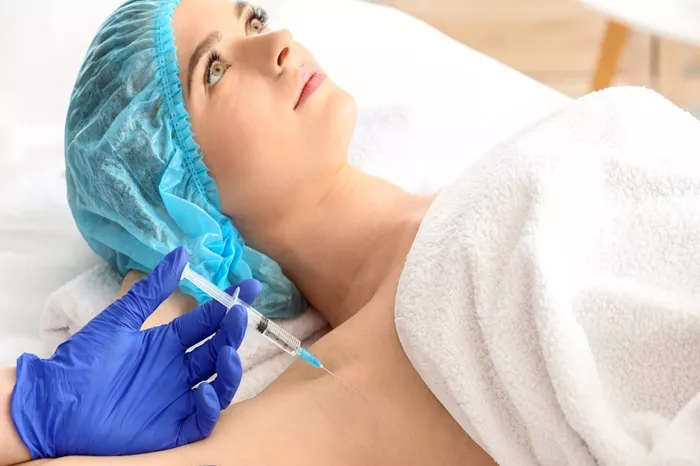Botox has become a popular treatment for various cosmetic and medical conditions, including hyperhidrosis, a condition characterized by excessive sweating. Many individuals seeking relief from this embarrassing issue are curious about how long the effects of Botox will last. This article will explore the duration of Botox for hyperhidrosis, how it works, factors affecting its longevity, and what patients can expect from the treatment.
Understanding Hyperhidrosis
What is Hyperhidrosis?
Hyperhidrosis is a medical condition that causes excessive sweating beyond what is necessary to regulate body temperature. It can affect different parts of the body, including the palms, feet, underarms, and face. This condition can significantly impact a person’s quality of life, leading to embarrassment, anxiety, and social withdrawal.
Types of Hyperhidrosis
Hyperhidrosis can be categorized into two main types:
Primary Hyperhidrosis: This type usually begins in childhood or adolescence and is localized to specific areas, such as the hands, feet, armpits, and face. The exact cause is often unknown, but it may be linked to genetic factors.
Secondary Hyperhidrosis: This type occurs due to an underlying medical condition or as a side effect of certain medications. It typically affects larger areas of the body and can occur at any age.
What is Botox?
Overview of Botox
Botox, or botulinum toxin, is a neurotoxin produced by the bacterium Clostridium botulinum. When used in small, controlled doses, Botox can temporarily paralyze muscles, preventing them from contracting. This property is what makes Botox effective for both cosmetic and medical treatments.
How Botox Works for Hyperhidrosis
When injected into the affected areas, Botox blocks the nerves that trigger sweating. This interruption significantly reduces the activity of sweat glands, leading to a decrease in sweat production. The results are often noticeable within a few days of treatment.
Duration of Botox for Hyperhidrosis
Average Duration of Effects
The effects of Botox for hyperhidrosis generally last between 4 to 12 months. However, individual experiences may vary. Many patients report experiencing relief from excessive sweating for about 6 months after treatment.
Factors Influencing Duration
Several factors can influence how long Botox lasts for hyperhidrosis, including:
Treatment Area: Different areas of the body may respond differently to Botox. For example, underarm injections may last longer than those in the palms or feet.
Dosage: The amount of Botox injected can impact its longevity. Higher doses may lead to longer-lasting results.
Individual Metabolism: Each person’s metabolism varies, which can affect how quickly the body processes the Botox.
Severity of Hyperhidrosis: Individuals with more severe hyperhidrosis may require more frequent treatments.
Injection Technique: The skill of the healthcare provider administering the Botox can also influence how effective and long-lasting the treatment is.
What to Expect During Treatment
Consultation
Before undergoing Botox treatment for hyperhidrosis, patients should have a thorough consultation with a qualified healthcare provider. During this consultation, the provider will assess the patient’s condition, discuss treatment goals, and explain the procedure.
The Procedure
The Botox injection process is relatively quick and straightforward:
Preparation: The treatment area is cleaned and may be numbed with a topical anesthetic to minimize discomfort.
Injection: Using a fine needle, the provider will inject small amounts of Botox into the targeted areas. The number of injections will depend on the area being treated and the severity of the condition.
Post-Treatment Care: Patients can usually return to their normal activities immediately after the procedure. However, it is recommended to avoid strenuous exercise and excessive heat for a few days.
Follow-Up
Patients are often advised to schedule a follow-up appointment after a few weeks to assess the treatment’s effectiveness and make any necessary adjustments.
Potential Side Effects
While Botox is generally considered safe, some individuals may experience side effects, including:
Pain at the Injection Site: Mild discomfort, swelling, or bruising may occur after injections.
Headaches: Some patients report experiencing headaches following treatment.
Flu-like Symptoms: Temporary flu-like symptoms may develop in some individuals.
Muscle Weakness: In rare cases, Botox can cause temporary muscle weakness in the treated area.
It is essential for patients to discuss any concerns with their healthcare provider prior to treatment.
Managing Expectations
Results Timeline
Patients typically start noticing results within 3 to 10 days after the injections. Sweating should decrease gradually during this time.
Longevity of Results
As mentioned earlier, the effects of Botox for hyperhidrosis can last between 4 to 12 months. Patients should be prepared for periodic treatments to maintain results.
Importance of Follow-Up Treatments
Regular follow-up treatments are essential to ensure ongoing relief from hyperhidrosis. Patients should work with their healthcare provider to establish a treatment schedule that meets their individual needs.
Alternatives to Botox
While Botox is a popular choice for treating hyperhidrosis, there are other treatment options available, including:
Antiperspirants: Prescription-strength antiperspirants containing aluminum chloride can be effective for mild cases of hyperhidrosis.
Oral Medications: Anticholinergic medications can help reduce sweating but may come with side effects.
Iontophoresis: This treatment involves using a device that delivers a mild electrical current to the skin, helping to reduce sweating, especially in the hands and feet.
Microwave Therapy: This procedure uses microwave energy to destroy sweat glands in the underarms.
Surgery: In severe cases, surgical options such as sympathectomy, which involves cutting nerves that trigger sweating, may be considered.
Conclusion
Botox is an effective treatment for hyperhidrosis, providing significant relief for many patients. While the effects typically last between 4 to 12 months, individual experiences may vary based on several factors. Understanding these factors and managing expectations can help patients achieve the best results.
If you are struggling with excessive sweating, consult a qualified healthcare provider to discuss whether Botox is the right option for you. With the right treatment plan, you can regain confidence and improve your quality of life.
Related topic:
How Long Does a Vial of Botox Last?
How Long Does Botox for Frown Lines Last?
Are PDO Threads Better Than Botox?


